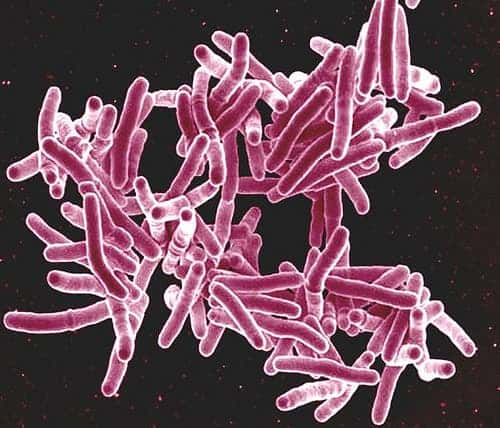Tuberculosis is responsible for the deaths of 1.6 million people annually around the world, more than any other infectious disease. But tuberculosis (TB) can be cured with antibiotics and with enough effort, the disease could be contained so that it stops infecting communities. According to a new study performed at the University of Hawai’i, TB could be eradicated in less than three decades with effective treatment and prevention policy. The catch: it would require a cumulative investment of $2 billion per year to fund the effort.
Tuberculosis is very dangerous. It’s also curable
TB is caused by bacteria called Mycobacterium tuberculosis that attack the lungs. The bacteria spread through the air from person to person, making the disease highly contagious. It is also fatal if left untreated. Antibiotics are required to be taken for a relatively long time, typically for about 6 months.
The TB-causing bacteria mostly grows in the lungs and can cause symptoms such as:
- A bad cough that lasts 3 weeks or longer
- Pain in the chest
- Coughing up blood or sputum (mucus from deep inside the lungs)
Other symptoms of TB disease may include:
- Weakness or fatigue;
- Weight loss;
- No appetite;
- Chills;
- Fever;
- Sweating at night.
Victoria Fan, an assistant professor of public health at the University of Hawai’i at Mānoa and one of the world’s foremost experts in tuberculosis, claims that the infectious disease could be eradicated with enough oversight.
She and colleagues published a new study in the journal Lancet Global Health outlying the steps world leaders need to take in order to reach this goal.
“If we direct global resources to curing people and preventing the spread of TB, we would save millions of lives and enormous amounts of money in the long run,” said Fan.
The best bang for our buck lies in early diagnosis. The more people with TB get properly diagnosed, the better the odds they can be saved while limiting exposure to yet-uninfected individuals. Currently, around 35% of cases of TB worldwide go undiagnosed or untreated.
At first, the costs for diagnosing and treating TB would increase substantially, but they are expected to drop dramatically once infection hotspots are contained.
And, although the financial effort to eradicate TB is huge, it’s well worth it. Even from an economic standpoint, each saved life means another contributing member to their respective economies. The researchers estimate that for every dollar spent in TB research and development in the US, the economy gains $16-$82.
“The goal of this Lancet Commission was to create a roadmap to a TB-free world,” Fan said. “The commission found that different countries will need different solutions. For example, in some countries, many people have TB that is resistant to certain antibiotics, so they need different plans than places where drug-resistance is less common.”
“Ridding the world of TB is a realistic goal,” Fan said. “Our report gives the health leaders of the world solid recommendations for action steps they can take to end this epidemic.”










